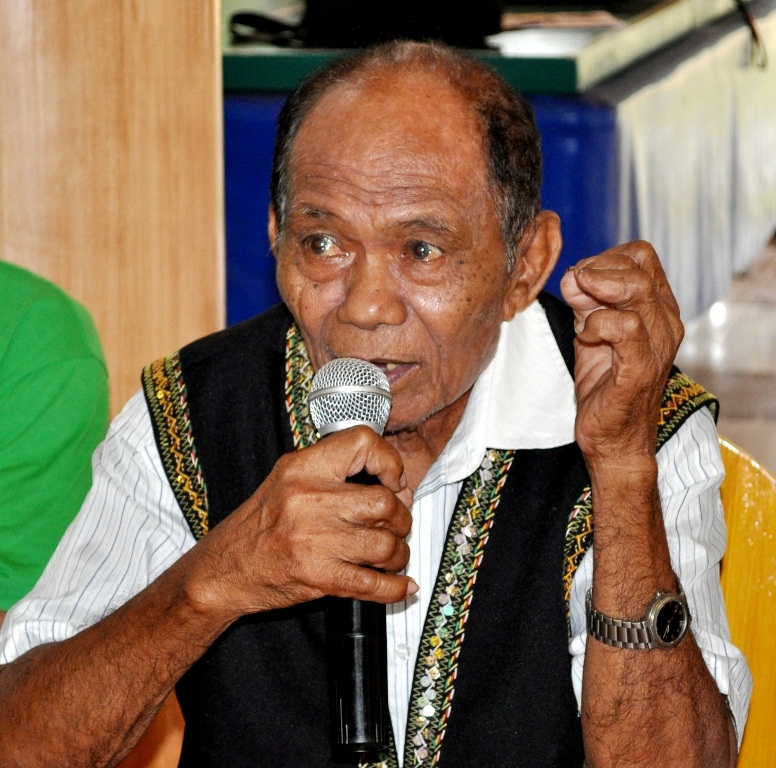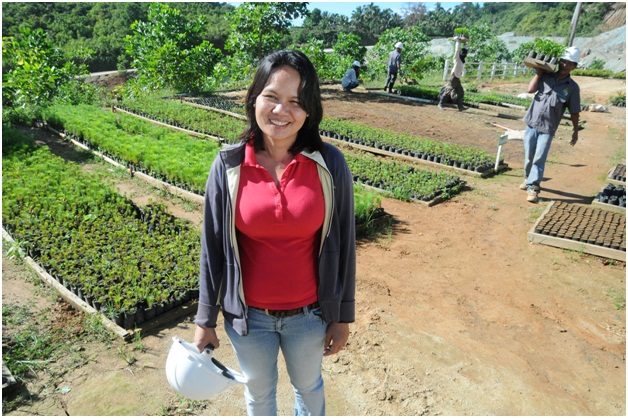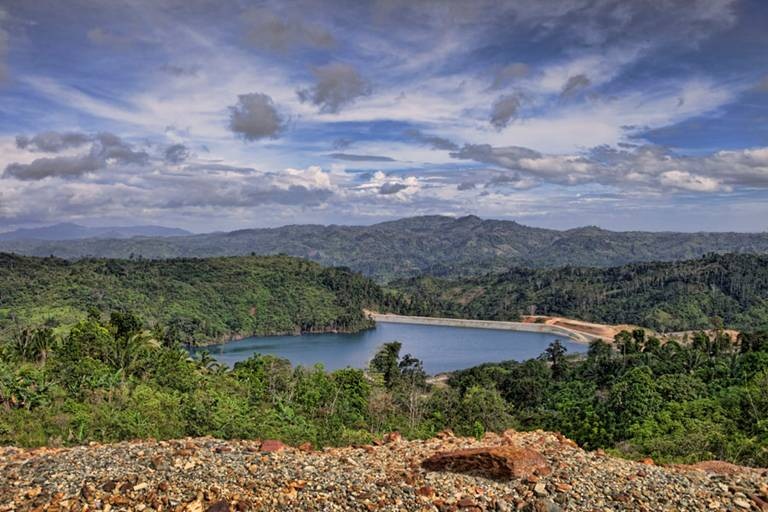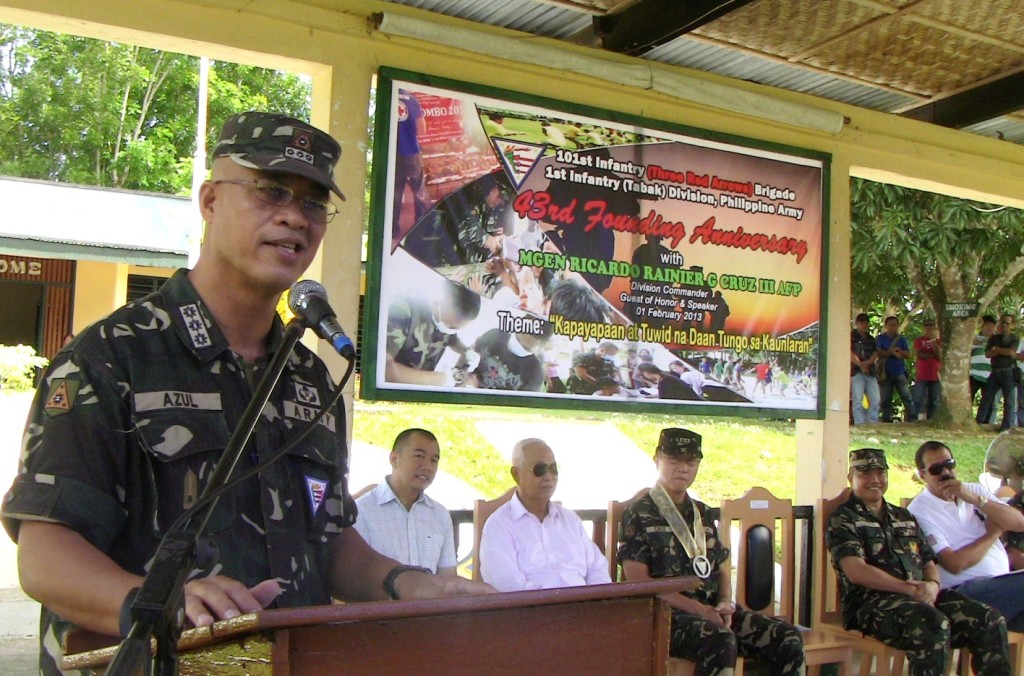School buses plying the mountains of Siocon manifest a company’s commitment to responsive education.
Canatuan, Zamboanga del Norte / February 2013 – Canatuan, an upland village 500 feet above sea level in the town of Siocon, Zamboanga del Norte, has long been the place of the Subanons – tribal people who are indigenous to the region. Like in the provinces of Zamboanga del Norte, Zamboanga del Sur and Zamboanga Sibugay, Subanons who live in the hinterlands thrive on farming root crops, rice, vegetables or raising livestock.
Being isolated and far from civilization, they were under the circumstances scarcely reached by the government; thus, social benefits came far and few between. They were the first inhabitants in this part of Mindanao, yet they were the least privileged especially when it came to basic services like education. But things have changed dramatically since then, most especially for the Subanons in Canatuan.
Along the rugged roads traversing it hills and mountains, school buses ply the winding route daily to fetch and take schoolchildren home. School buses – where the laughter of Subanon kids onboard seems to temporarily disrupt the monotonous sounds of nature as they pass by – provide a welcome respite to villagers. They are a testament to a happy, formative childhood.
At the school where the students disembark, two imposing parabolic antennas provide internet connection for high school students conducting research on computers that are powered by a dedicated generator set.
Most probably, in all hinterlands in the entire Zamboanga Peninsula, it is only in the boondocks of Canatuan that a public school is equipped with school buses that ferry students daily and where students conduct research through the worldwide web and a steady supply of textbooks.
A novel idea
“This is the best thing that ever happened to us. Quality education is now within our reach,” said Gemma Dandana Tolentino, one of the first Subanon natives who earned a college degree through hard work and self-reliance. Gemma can really tell. Like most of the older generation of Subanons, her mother Zenaida can neither read nor write. “In our time, it will take a whole day to walk to the nearest school,” said Zenaida. “It was really difficult to get education before. But things got better when the mining company came over,” she added. For students, education translates to opportunities that go beyond working in the immediate community. For parents, it simply meant another manifestation of the company’s commitment to improve their lives through education.
Aside from fertile agricultural land, Canatuan is fortunately endowed with minerals like gold silver, copper, zinc and coal. In 2004, TVI Resource Development Philippines Inc. (TVIRD), established its mining operations in Canatuan for gold and silver for 4 years, and then continued with copper and zinc up to the present. The company likewise gave equal attention on providing education for the Subanon hosts as part of the company’s corporate social commitment.
From forth a dilapidated and make-shift two-classroom public school during the 90’s, came the Canatuan Public Elementary and Secondary School – an institution that is culled in private school standards set against a rural backdrop. It has sufficient classrooms, learning materials and internet-ready computers, making it very conducive to learning. And if there are not enough teachers from the government, the company readily provides. There were once seven company-paid teachers to complement the Department of Education faculty. Neighboring communities are also provided daycare centers while 45 college students are currently being supported by the company.
Pushing it forward
According to Jane Manaog-Olaver, TVIRD’s program officer for education, the company has earmarked P4 million for Responsive Education in 2012 alone as this is one of the four vital components of the company’s corporate social commitment. This funded school books and instructional materials for the students, educational support to the rest of the barangays in Siocon, construction of additional classrooms, day-care centers and many others.
Together with Sustainable Livelihood, Health and Sanitation and Infrastructure, the company vertically aligns its social programs with the United Nations’ Millenium Development Goals. Last year too, the company built one more classroom for the Canatuan Elementary School and a school building in a coastal village in Bosicong, Sta. Maria. This was accomplished through the help of Maple Tree and Petron Foundations as well as the Habitat for Humanity.
According to Olaver, Canatuan Public Elementary and Secondary School has a growing population of over 850 students. Besides its 143 high school alumni, the company will also have 19 college scholars who will graduate this March, in addition to the 27 degree holders it has produced earlier.
In responsible mining, sustainability is key
TVIRD’s decommissioning of mining operations in 2013 does not curtail the company’s commitment to education, according to Joel Alasco, manager for community relations and development. Aside from transferring the high school for a bigger school grounds for more rooms for improvement, TVIRD is set to establish a technical-vocational school that focuses on teaching technology in agricultural development.
“From the third largest producer of copper in the country, the company envisions a Subanon land capable of producing high-value crops like cacao and coffee,” Alasco added. “In fact, the company had already inked a partnership deal with a multi-national food conglomerate to ensure viability, success and sustainability,” he informed.
The company also ensures a clean and healthy environment for both the students and the community through its extensive environmental management and protection program, which is geared towards conserving Canatuan’s natural environment.
Good things have come to the Subanons of Canatuan. It all began when they welcomed a responsible miner into their ancestral land close to 20 years ago. Today, it is a story of a promise fulfilled.




